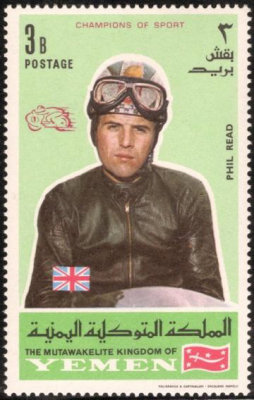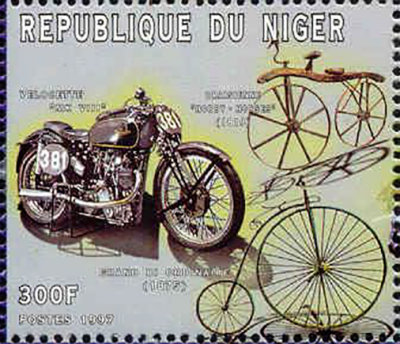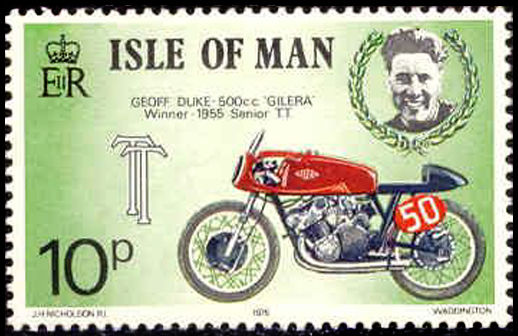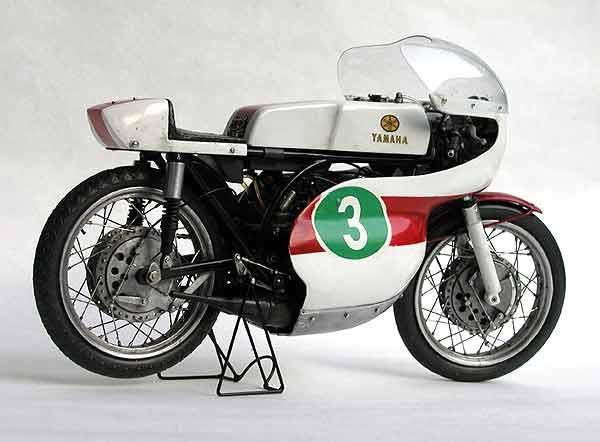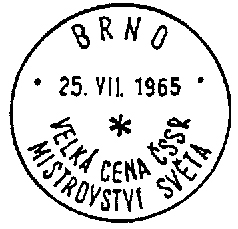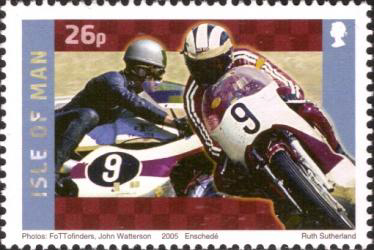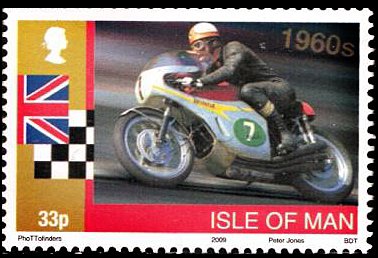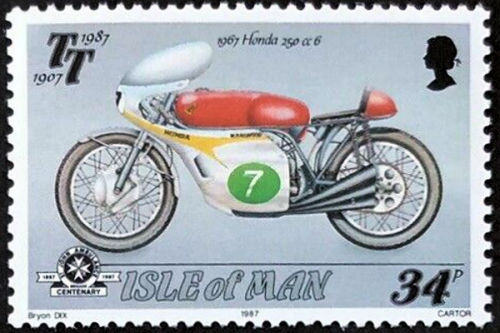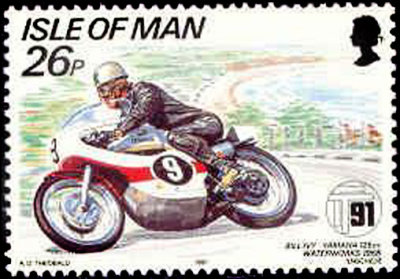Prince of Speed (part 1)In October 2022 we heard the sad news that Phil Read had passed away. Phil Read was an enthusiastic motorcyclist and worked as an apprentice fitter at "Brown and Green", an industrial machinery manufacturer in Luton. |
He had already won the 250 cc title before the GP des Nations, and the new four-cylinder Yamaha RD 05 appeared there. Read had technical problems and only finished seventh. With the now water-cooled RA 97 he won the 125 cc Lightweight TT, but this was again a one-off performance. The machine was sent back to Japan.
In 1966 both Phil Read and Bill Ivy rode for Yamaha in the 125 and 250 cc classes.
In the 125 cc class, they were outclassed by the new five-cylinder Honda RC 149 of Luigi Taveri. Ivy nevertheless won four GPs, Read only won the GP of Finland where Ivy was unable to start after a crash in the Hutchinson 100.
From the Ulster Grand Prix, Read and Ivy had the new four-cylinder Yamaha RA 31 at their disposal. In the 250 cc class, Mike Hailwood was too strong for the Yamahas with the six-cylinder Honda RC 166.
Read didn't win a single race here. The RD 05 dropped out four times and Read took five second places. Read's participation in the 350cc class was limited. Although he and Bill Ivy trained in Assen with RD 05s enlarged to 254 cc, they did not start.
After Tarquinio Provini's accident at Man, Benelli wanted her new 350 cc four-cylinder with double overhead camshafts at Monza to be riden by Phil Read, who did not participate in that class for Yamaha. However, Read did not get permission from Yamaha. In Japan, Honda refused to start. Even then other brands couldn't win with their 350cc racers. The first two places went to Phil Read and Bill Ivy on their 254cc Yamaha RD05As.
In 1967 the 125 cc five-cylinder was banned by the FIM, and Honda withdrew from this class. Both the RA 31 and the updated RD 05 A lacked reliability, but there was no competition in the 125 cc class, except from Suzuki, which had problems with the development of the four-cylinder RS 67 and still had to fall back on the two-cylinder, which was now called RT 67. Read and Ivy both won races (Phil Read in the 125 cc Lightweight TT and the Assen TT), but after Read dropped out in Czechoslovakia and Finland he received stable orders to stay behind Ivy. Bill Ivy ended first in the 125cc championship, Phil Read second.
Things were different in the 250cc class. Honda still competed with the six-cylinder, but Phil Read still won the Spanish GP, the GDR GP, the Czechoslovakian GP and the GP des Nations. In all these races, Mike Hailwood had problems with his Honda or even dropped out. Phil Read finished second in the world championship.
Even before the start of the 1968 season, Yamaha announced that the mechanics would be withdrawn early (after the TT of Man or the TT of Assen), leaving Bill Ivy and Phil Read to maintain their expensive factory racers themselves. After two GPs it was already clear that the two didn't form a real team. At the start of the Belgian Grand Prix, the division of roles at Yamaha was clear: Ivy had to become 250 cc champion and the 125 cc class would be for Read. However, the issuing of team orders was against race regulations and the public fight between Ivy and Read after the 250cc race in Czechoslovakia certainly led to a "friendly conversation" between sports commissioner Henk Burik and Phil Read before the start of the Finnish Grand Prix. There was no chance that team orders would be followed because the fight between Ivy and Read was not over, and they certainly would not support each other again.
The 125 cc Yamaha RA 31 A had gained 2 hp in power and lost approximately 15 kg in weight compared to its predecessor.
With the disappearance of Suzuki, there was completely no competition left in the 125 cc class. Read became world champion without too much trouble, aided by Ivy who assisted several times and even became particularly slow in the 125 cc Lightweight TT for no apparent reason, after completing the first lap in that class at more than 100mph. Ivy expected the same help from Read in the 250cc class, but after a big fight in Czechoslovakia, Read decided to flout stable orders. Yamaha did everything they could to make Ivy champion. He even got special expansion chambers for his RD 05 A for the Ulster Grand Prix. After that Grand Prix Ivy was 2 points ahead, but Read won the last Grand Prix at Monza and as a result they both had 42 points net and 52 points gross (only 6 of the 10 results counted). Each also had five victories, and the standings were to be determined by adding up the race times of the races in which they both finished. Those were the races in Assen, the Sachsenring, Brno, and Monza. Ivy had ridden it in a total time of 3 hours, 17 minutes and 28.2 seconds, Read in 3 hours, 15 minutes and 22.9 seconds. So it took Ivy 2 minutes and 5.3 seconds too long for the world title. Like Giacomo Agostini, Phil Read was now a two-time world champion in 1968.
Because of his actions in 1968, Phil Read would never receive support from Yamaha again. This brand officially left the road racing world championship in 1969, following the example of the other Japanese brands, and there were virtually no factory teams left. However, Yamaha still unofficially supported riders with special machines that were known as production racers, but Phil Read was not among them. He started in some of the spring races in Italy, but the fact that he did so with a three-year-old Yamaha TD 1 B made it clear that the high starting money was more important than the chances of winning. Benelli gave him a four-cylinder for the 1969 250cc Lightweight TT when factory driver Renzo Pasolini broke a collarbone, but he dropped out. Read also hoped to get a 250 cc Benelli for the GP des Nations, but when that didn't happen he entered with a Yamaha TD2 production racer. He thus won the race and that cost the new factory driver Kel Carruthers the lead in the world championship.
Carruthers still became champion in the last race in Opatija. Read also won the 350 cc race in Monza on a Yamaha TR 2.
Hans Baartman
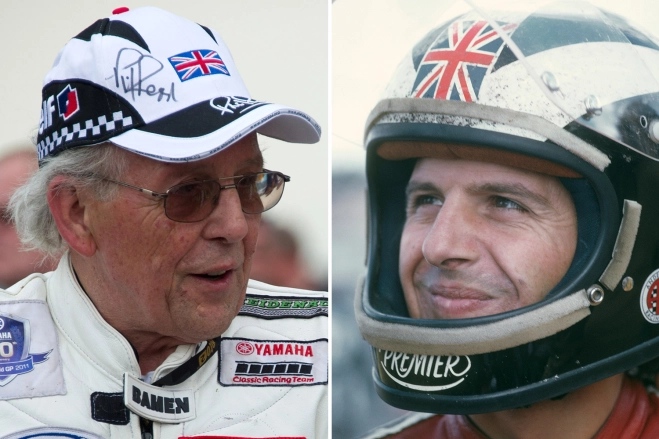
Phil Read: Winner of 8 world titles and 52 Grand Prix
★ 1-1-1939 Luton - † 6-10-2022 Canterbury
